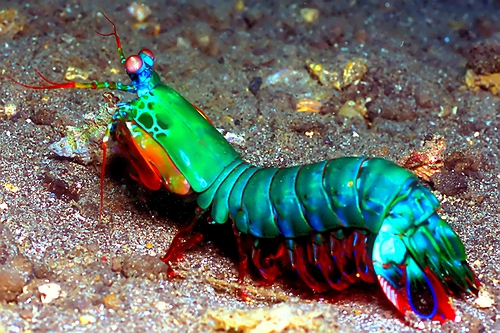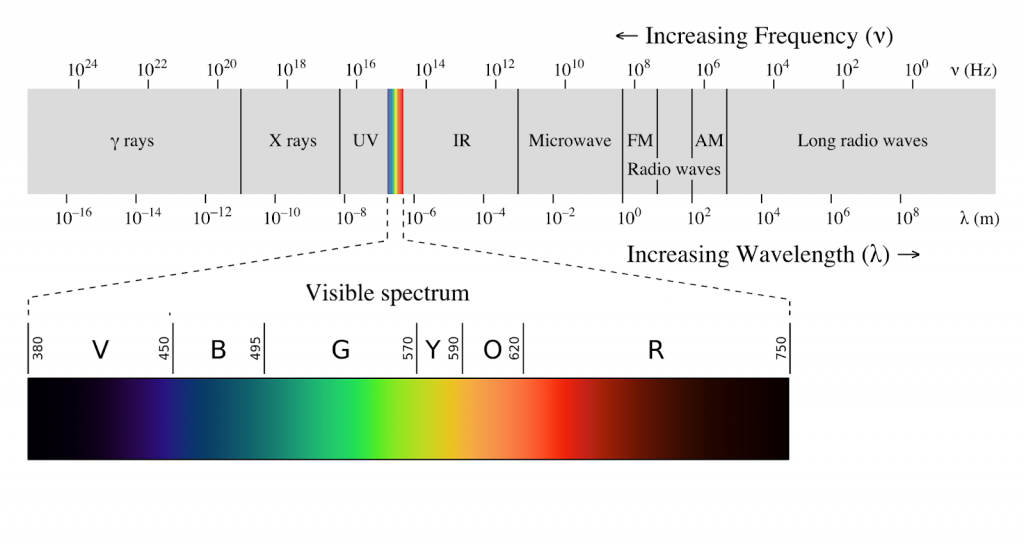By Rachel Cherney
Earth is filled with some incredible sights and unbelievable creatures. You may have heard of the great white shark, the giant squid, the anglerfish, or even the tardigrade, that can survive in space, or decades without water! Now, you’re going to learn about the mantis shrimp, a class of about 450 sea creatures predicted to have the most complex eyes on the planet! Mantis shrimp have between 12 and 16 photoreceptor cells, whereas humans only have three. Photoreceptor cells are special cells in our eyes that convert light into signals that allow our brains to “see”. Since they have four to five times as many photoreceptor cells as humans, mantis shrimp can see colors that humans can’t. Additionally, while we see with binocular vision, mantis shrimp have trinocular vision and thus better depth perception than humans. The image to the right shows what light humans can see (the visible spectrum), and what light mantis shrimp can detect (visible spectrum and UV light).
Not only does the mantis shrimp have perfect eyesight, but some species (called “smashers”) also have a pretty powerful upper-cut. Its arms, which are like clubs, have evolved for close range fighting and are used to crack open and crush their meals. Mantis shrimp attack by “punching” out towards their prey. The club-like arms are so fast and strong that they can attack creatures much larger than them, stunning or even killing them with one punch (One Punch Man, anyone?). While standing still, smasher mantis shrimp can punch with speeds up to 51 mph. These punches are so powerful that they generate heat filled bubbles in the water, called cavitation bubbles. When these bubbles collapse, they send a shockwave force through the prey of the mantis shrimp, with forces up to 1,500 newtons – about the same force as when a great white shark bites down on its prey! This means the prey has been hit twice with one strike – the punch, and the cavitation bubble shock wave. Even if the first punch misses the prey, the shock wave from the cavitation bubble is still strong enough to stun or even kill the prey.
While these mantis shrimp may seem scarier than a great white shark, they usually only grow up to 12 inches in length, and are nocturnal, meaning they are active at night. So on your next vacation in tropical coastal waters, you won’t have to worry about the mantis shrimp – great whites though, are another story.
Edited by Rachel Battaglia and Christian Agosto-Burgos


